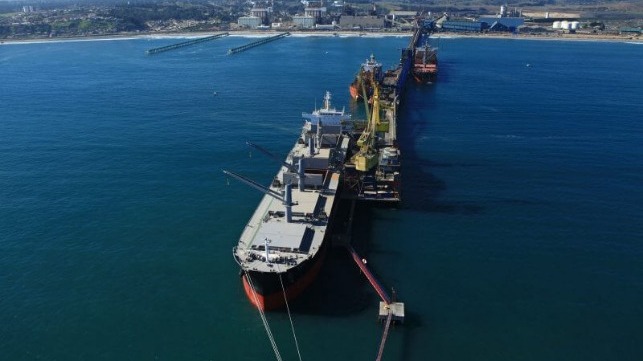MAIB Cites Lack of Safety Protocols, Poor Communications in Officer's Death

The UK’s Marine Accident Investigation Branch (MAIB) released its report into a fatal accident while a bulker was berthing in Chile citing safety failures, not following the port’s established docking procedures, and communication issues. They are calling for better communication and planning as well as efforts to increase awareness of the dangers of mooring line entrapment which could result in sudden release.
The incident was being investigated on behalf of the Isle of Man and the bulker Mona Manx (63,878 dwt) which at the time of the accident in August 2021 was being managed from Singapore by Union Marine Management and registered with the Isle of Man. The dry bulk carrier was arriving in ballast on August 26, 2021, and maneuvering that morning to berth at the general cargo terminal.
During the docking procedure, one of the vessel’s lines broke with a loud bang. The line suddenly released and recoiled vertically upwards striking the second officer who was on the stern managing the procedure. It struck him under the chin, lifted him off his feet, and caused him to fall backward hitting his head on an accommodation ladder. Medical teams from Puerto Ventanas, Chile, where the vessel was docking, attended to him and he was pronounced deceased at the scene.
The vessel was being assisted by two tugs and had a local pilot aboard. The bulker was alongside and its first spring lines fastened while it was preparing to send the second spring line from the stern ashore. It was then that port control told the pilot that the vessel needed to move 30 meters astern to align with the cargo loading arm. MAIB notes it is unclear why the arm was not relocated instead of attempting to move the vessel astern.
The master instructed the mooring party to adjust the spring lines while the vessel moved astern. They were told to monitor the line in case they became caught on the protruding jetty fenders. MAIB believes the second officer repositioned into the danger zone to monitor the lines. The vessel was set to dead slow astern for the move and eventually reached a speed of 0.5 knots.
MAIB finds that the astern maneuver went against the port’s procedures that a vessel should not be using its engines alongside. They believe that the pilots were not advised of this and the pilot did not discuss the issue with the master. They also note that congested radio communication could have reduced the crew’s ability to safely conduct the berthing operation.
Union Marine Management took steps to improve crew awareness of the potential dangers and reviewed the requirements for the safety briefings before arrival at port. The Maritime and Coastguard Agency has also amended the safety code after finding it did not include guidance highlighting the potential vertical dangers of a recoiling mooring line and the risks of mooring line entrapment.
The report also made recommendations to Puerto Ventanas and Quintero Port Authority to provide clear instructions for masters and pilots on the use of engines alongside. They also recommended that the risks associated with mooring line entrapment are included in the master-pilot exchange.
MAIB highlights that between 2011 and 2023, the International Management Safety Code (IMSR) recorded 23 injuries and two fatalities, including this one, resulting from mooring deck accidents. It cites three specific examples including two instances of parted and recoiling lines and one where a mooring line sprang out of an open roller fairlead. Seafarers know the dangers and force involved in parted lines although MAIB advised that more should be done to advise of these specific dangers.

No comments:
Post a Comment